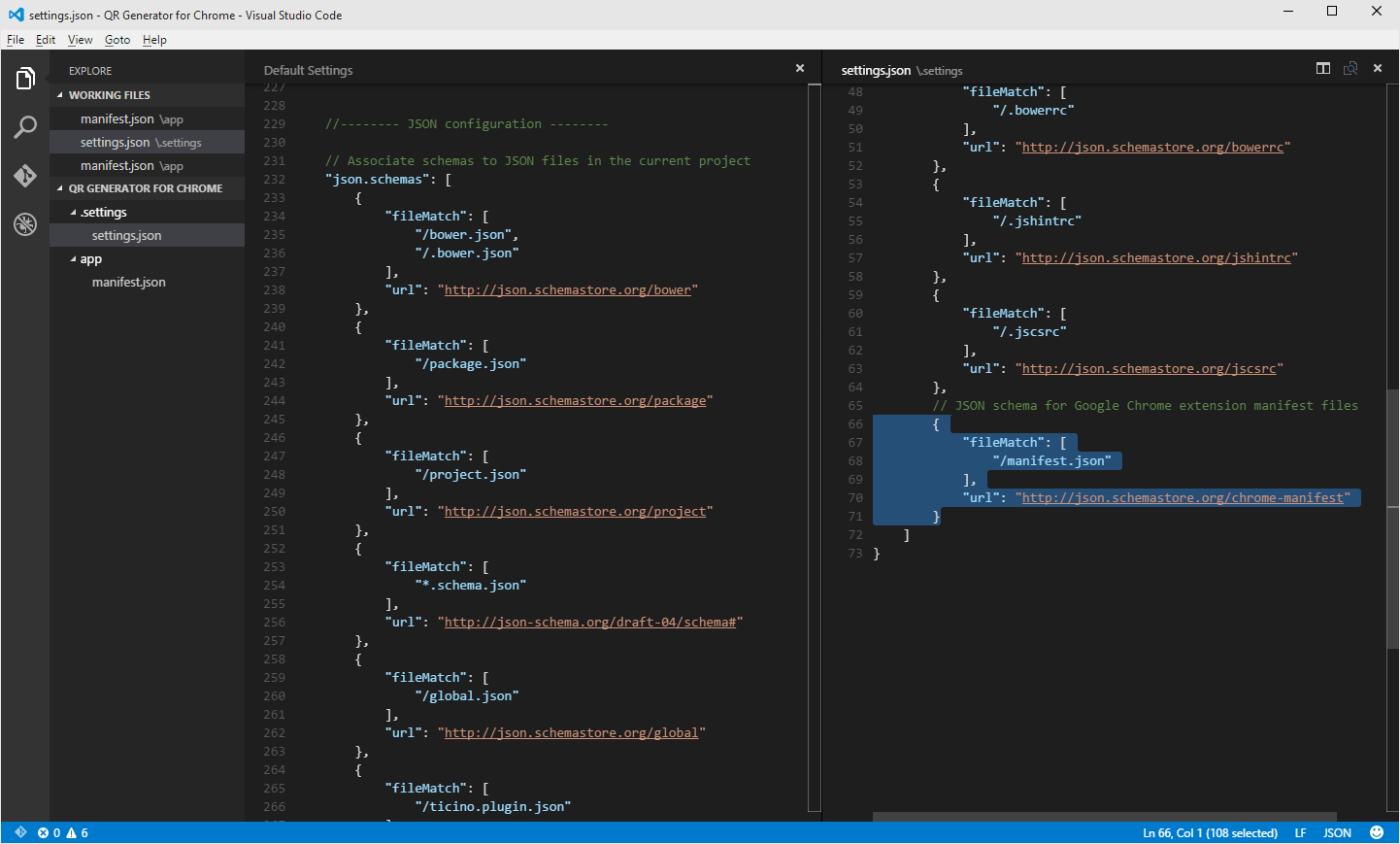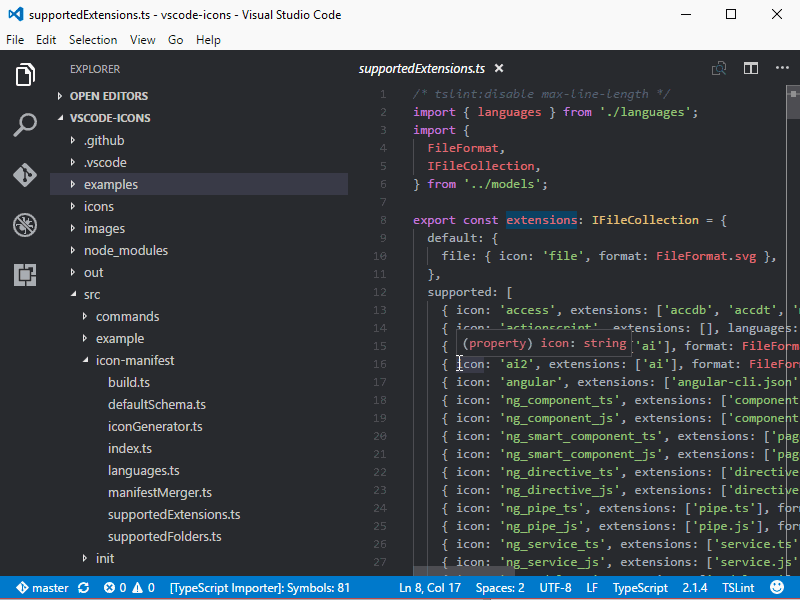

- Visual studio code icon extension how to#
- Visual studio code icon extension install#
- Visual studio code icon extension update#
- Visual studio code icon extension upgrade#
You can arrange multiple open files side-by-side.

Visual Studio Code’s user interface is divided into five main areas which you can easily adjust. Let’s first get acquainted with the user interface: Image source You can find the repo information on this path: /etc/apt//vscode.list. The reason this works is because VS Code added its repo to your package repo registry during the initial installation.
Visual studio code icon extension update#
This will update all installed Linux packages including Visual Studio Code.
Visual studio code icon extension upgrade#
A much easier way is simply running sudo apt update & sudo apt upgrade -y.
Visual studio code icon extension install#
Clicking this will install the update for you and restart VS Code.įor Ubuntu-based distributions, clicking on the update notification will simply open the website for you to download the latest installer. When it’s ready to install, a restart prompt will appear. The download process occurs in the background while you’re working. For Windows users, you’ll have to click on the notification to download and install the latest version. When an update is available, it displays a notification prompt. When you visit the download page, it will detect your operating system and offer you the correct download link. Visual Studio Code’s package installer is less than 100MB and consumes less than 200MB when fully installed.

Visual studio code icon extension how to#
Let’s show you how to use Visual Studio Code’s features. Visual Studio IDE comes second, and NotePad++ comes third. According to a developer survey done by Stack OverFlow in 2019, Visual Studio Code is the most popular code development environment with 50.7% usage. The snippets system used by all of these editors originated from TextMate. Mac developers had access to TextMate, which was released in October 2004. I’ve listed them below in the order they were released: These lightweight editors provided many features that were previously exclusive to IDEs. Soon, a new crop of platform independent code editors arrived. Many developers preferred using advanced text editors such as emacs and vim to write their code in. As a result, these platforms took a lot of disk space and were slow to start up. They also contain plenty of features that most developers don’t use, though they are essential for some teams. They analyze code, highlight errors, and have all sorts of other features that provide assistance. These platforms provide the complete development workflow, from coding to testing and deployment. Not so long ago, these were the fully integrated development environments on offer:


 0 kommentar(er)
0 kommentar(er)
